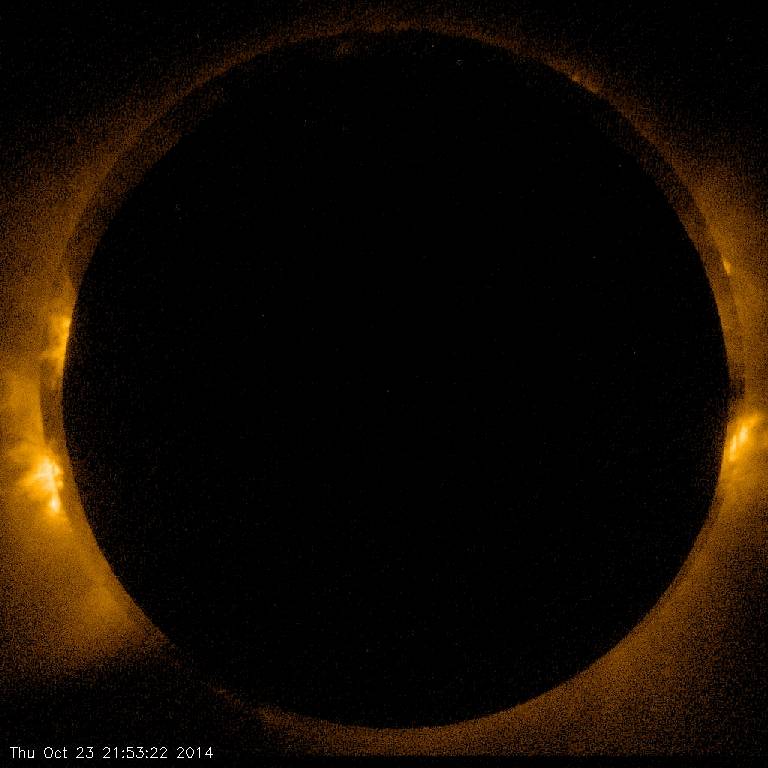A partial solar eclipse was visible from much of North America before sundown on Thursday, Oct.23. A partial eclipse occurs when the moon blocks a portion of the sun from view.
The Hinode spacecraft captured images of yesterday’s eclipse as it passed over North America using its X-ray Telescope. During the eclipse, the new moon eased across the sun from right to left with the Sun shining brilliantly in the background. And as a stroke of good luck, this solar cycle’s largest active region, which has been the source of several large flares over the past week, was centered on the sun’s disk as the moon transited!
Hinode is in the eighth year of its mission to observe the sun. Previously, Hinode has observed numerous eclipses due to its high-altitude, sun-synchronous orbit. As viewed from Hinode’s vantage point in space, this eclipse was annular instead of partial, which means that the entire moon moved in front of the sun but did not cover it completely. In this situation, a ring of the sun encircles the dark disk of the moon.
Led by the Japan Aerospace Exploration Agency (JAXA), the Hinode mission is a collaboration between the space agencies of Japan, the United States, the United Kingdom and Europe. NASA helped in the development, funding and assembly of the spacecraft’s three science instruments.
Hinode is part of the Solar Terrestrial Probes (STP) Program within the Heliophysics Division of NASA’s Science Mission Directorate in Washington. NASA’s Marshall Space Flight Center in Huntsville, Ala., manages the Hinode science operations. The Smithsonian Astrophysical Observatory is the lead U.S. investigator for the X-ray telescope.
Image Credit: NASA/JAXA/SAO; Prepared by: Dr. David McKenzie, Montana State University



























